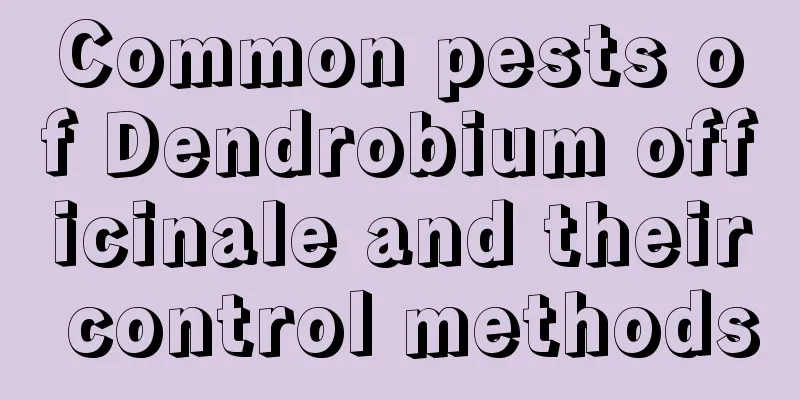Common pests of Dendrobium officinale and their control methods

Common pests of Dendrobium officinale: Philippine shield scalePest symptomsPhilippine shield scale is the main pest of Dendrobium. The male adults and nymphs gather and fix on the leaves of the plants to suck sap and cause damage, while also inducing sooty mold disease, which causes the leaves of the plants to wither. Severe cases can lead to the death of the entire plant. The female adults of Phenacaspis den drobii Kuwana hibernate on the back or edges of leaves of plants. The peak hatching period is mid-to-late May. The newly hatched nymphs are on the back of leaves of plants, and then gradually move to the edges of leaves and settle down to harm plants. Around late May, they begin to secrete wax and gradually shape into a shield shell, and never move again for the rest of their lives. Prevention and treatment methodsPrevention is the main focus, and healthy plants should be selected for breeding. Secondly, since scale insects often occur when the environment is too wet and ventilation is poor, special attention should be paid to environmental ventilation in daily management to avoid excessive humidity. Once a small number of insects occur, you can use a soft brush to gently remove the insects and then rinse them with water. When the nymphs have just hatched and have not yet formed a waxy shell, you can use 800-1000 times diluted 40% dimethoate emulsion or 80% DDT emulsion for prevention and control. Lime sulfur mixture can be used for control in early spring and early winter. Common pests of Dendrobium officinale: snailsPest symptomsThe pests mainly hide on the back of the leaves and eat the leaf flesh or bite the stems to damage the petals. This pest can occur many times a year. Once it occurs, it is extremely harmful and can often eat the entire plant beyond recognition in one night. Prevention and treatment methodsMix trichlorfon with bran and spread it in places where pests often move as poison bait to kill them; spray trichlorfon, cypermethrin and other pesticides on the cultivation beds and surrounding environment, and you can also sprinkle quicklime and saturated salt water; pay attention to the cleanliness of the cultivation site, and remove dead branches and leaves outside the site in time. |
<<: Echinacea Pests and Control Methods
>>: Pests of Bauhinia and their control methods
Recommend
What to do if the leaves of Chlorophytum are withering
1. Change pots regularly (1) Specific reason: Reg...
Does Jasper Flower prefer shade or sun?
Does Jasper Flower prefer shade or sun? Jade flow...
Cherry Blossom Tree Growth Environmental Conditions and Characteristics
Cherry Blossom Tree Growth Environmental Conditio...
What to do if the leaves of the money tree turn black
Causes of blackening Frost damage The incubation ...
What are the varieties of grapes?
1. Xiangfeng, an early-maturing variety This vari...
The language of orchids. What does it mean to give orchids as gifts?
1. Flower Language In our country, the flower lan...
Roses can climb all over the wall in a few years
1. How many years can it cover the wall? It is no...
When is the best time to plant winter cabbage?
In winter, cabbage is a common guest on the table...
Summer and winter survival of Alumroot
How to survive the summer with alum root Pay atte...
Kiwifruit grafting time and method
1. Grafting time Kiwifruit grafting can be done i...
The efficacy and nutritional value of strawberries
1. Nutritional value of strawberries Strawberries...
Diseases and control methods of Phlox
Brown spot of Phlox symptom Brown spot disease ma...
The growing environment and local conditions of lotus root
Lotus root growth environment and conditions Lotu...
The best time and method to plant garlic and which month is the best for sowing
Garlic planting time The time for planting garlic...
How to grow African big leaf banyan
1. Breeding environment 1. Watering: African big-...









